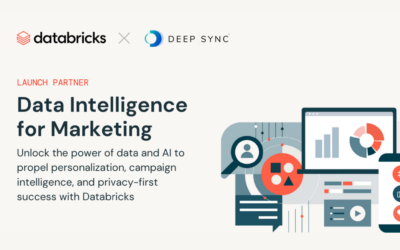Your website is one of the most powerful marketing tools in your toolkit. In fact, it’s often the first place new users will check to learn more about your organization and its mission. Plus, your website serves as a communication hub for returning supporters to keep up with your latest projects and events.
However, if you’re not regularly optimizing your nonprofit website to appeal to your audience’s interests and offer a user-friendly experience, you might struggle with maximizing engagement and, in turn, converting casual visitors into loyal supporters.
In this guide, we’ll go over three key metrics you need to start tracking to create an informed data-driven strategy that will enhance your overall website performance and keep your organization top of mind for your audience. Let’s begin!
Page views
Page views refer to the number of times your supporters view a page on your website—such as your homepage or event landing page. This metric can tell you a lot about how certain pages are performing and whether you need to optimize them to increase their visibility.
Specifically, tracking this metric can tell you the following:
- Content popularity among your audience: Taking a look at page views will tell you which pages are the most popular and which pages may be struggling to perform well. By knowing what pages attract the most views, you can break down what type of content resonates the most with your audience and take steps to optimize other pages to better meet your audience’s interests.
- User experience (UX) optimization: Sometimes your pages might have great content but struggle with page views because of poor user experience. Make sure to brush up on accessibility best practices—such as making sure your text stands out from the background, your images are reasonably sized, and all non-text elements have alternative text.
- Need for search engine optimization (SEO): Another possible reason behind poor page visibility, and in turn, low page views is that your website doesn’t adhere to SEO best practices. Search engine optimization refers to the practice of increasing the visibility of your site on search engine results pages (SERPs). To boost SEO, create a keyword strategy that is relevant to your target audience, develop high-quality content, and optimize your site for mobile.
- Gaps in your navigation: Finally, some pages on your site might struggle to garner views simply because they’re hard to find. Ensure your navigation bar points clearly to all of your most important pages. You might even make a menu so you can organize your pages into categories, such as a “Ways to Get Involved” tab or “Our Programs” section.
If you’re struggling to diagnose the central cause of low page views, visit your website from the perspective of a user and ask yourself the following questions:
- Does this page clearly answer any questions visitors may have?
- Is the content engaging to read?
- How easy or complicated is it to find this page?
Answering these questions will point you in the right direction on how to improve your page views.
Keep in mind that the right website builder can help you easily optimize your website to bring in more views. Morweb’s guide to nonprofit website builders recommends investing in a solution that comes with drag-and-drop editing to streamline web design, built-in SEO and navigation tools, and accessible web templates. Whether you want to build a new site from scratch or revamp your existing digital presence, a comprehensive content management system (CMS) can support your team through this process.
Conversion rate
Conversion rate refers to the number of users who complete an action on your website—whether that’s submitting donations on your annual giving page, signing up for your email newsletter, or applying to volunteer at your next fundraising event. Using conversion rate data, you can gather key insights into how effective your website’s pages are at moving users along the supporter journey.
For example, let’s say that your donation page has a high amount of page views but a low conversion rate. These metrics would indicate that your donation page may be easy to find on a search engine results page or your website, but once users land on it, they don’t feel compelled to give. As a result, you’d likely struggle with donor acquisition and retention.
If this is an issue your team has run into, you might consider the following best practices:
- Creating a strong call to action to give that ties back to your mission. For example, a food pantry might write “Give today to end hunger in our community now.”
- Adding suggested donation amounts and explaining the impact of each amount to take the guesswork out of how much supporters should give.
- Branding your donation page with your logo, color scheme, fonts, and unique tone and message so supporters feel confident they’re giving to your organization.
Conversion rate data can also help you understand the strategies that are working in your favor and encourage supporters to take action. For instance, an animal shelter might create a blog article about pet overpopulation and, at the end of the article, include a visually distinct call to action about fostering with an emotionally compelling image of a dog in their care.
If this call to action has a high click-through rate to the fostering application and leads to an increased conversion rate, then the shelter will know its audience responds well to images of animals in their care. By monitoring conversion rates, your nonprofit can identify which website elements and content types are most effective in driving conversions and mold your data-driven marketing strategy accordingly.
Traffic sources
You might have pages with high page views and conversion rates, but do you know where users are finding your content to begin with? Traffic source data helps you understand which marketing channels and strategies generate the most traffic and engagement. As a result, you can allocate your resources more effectively towards the tactics that resonate with your audience.
For example, your traffic may come from:
- Organic search: Visitors may find your website organically through search engines like Google. They enter keywords into a search engine, like “animal shelter volunteering opportunities near me” or “environmental cleanup organization in Boston” and click on search results that lead to your site.
- Direct traffic: This term refers to users who type your website’s URL directly into their web browser or use bookmarks to access your site. Often, direct traffic comes from your most loyal supporters who frequent your website regularly.
- Referral traffic: Visitors can also arrive on your nonprofit’s website by clicking on outbound links from other websites. These links can be from other nonprofits that you collaborate with, blogs, or news articles.
- Social media: If you have a robust social media strategy, you’ll likely find that many of your users navigate to your website from channels like Instagram, Facebook, TikTok, or X (formerly Twitter). They might click on links to your site in your bio or social media posts.
- Email marketing: Supporters who are subscribed to your email newsletters might navigate to your website from any links you include in your email communications.
- Search ads: Another way users can land on your website is through search ads, which your nonprofit can implement at no cost through the Google Ad Grant program. Getting Attention explains that Google Ad Grants are free advertising credits used to bid on different keywords, and when users search for those keywords, ads for your website can appear at the top of the search results.
Understanding traffic sources can also help you understand gaps in your current marketing approach. Let’s say that your nonprofit is trying to ramp up its social media marketing, but after checking on your traffic sources, you note that very little traffic is actually coming from social media.
You might work to better integrate your social media and website by including links to your most important web pages in your social media bios and repurposing website content on your feed with links to learn more. To take it a step further, you can also direct traffic from your website to your social media by leveraging a content management system with built-in templates that include social sharing buttons.
Wrapping Up
Backed by these website metrics, your nonprofit can easily diagnose issues with your website and identify ways to strengthen your digital presence for new and returning visitors. As a result, you’ll be able to build long-lasting connections with supporters and drive meaningful conversions. Be sure to work with a well-designed website builder to optimize your design with ease.












0 Comments